Table of this Contents
ToggleUnveiling the Allure of Hasna Hena Flower: Nature’s Delight.
Hasna Hena Flower is the synonym of Night blooming jasmine. For perfume and freash air, Rural people and Farmer cultivate it. This flower spread perfume and make air fresh at the night time. American people called it, The Queen of the Night.
Hasna Hena flower.
Hasna hena flower is one of the few flowers that have taken place in the corners of people’s minds. Bloom at night. Deep perfume. Hasna hena flower is commonly known as the queen of the night. It is a popular ornamental species. Popularity is 70%.
These flowers bloom at night and spread the fresh fragrance all around. It is a species of Sestrum of Mexico, Central America (e.g. Belize, Costa Rica, El Salvador, Guatemala, Honduras, Nicaragua and Panama) and Cuban native plant family Solanaceae (potato family).
It colonizes aggressively disturbed areas such as: roadsides and forest gaps creating dense impenetrable shrubs and resulting in competition and displacement with native plant species. Hasna hena’s presence is widespread in Bengali Literature, Music and Art.
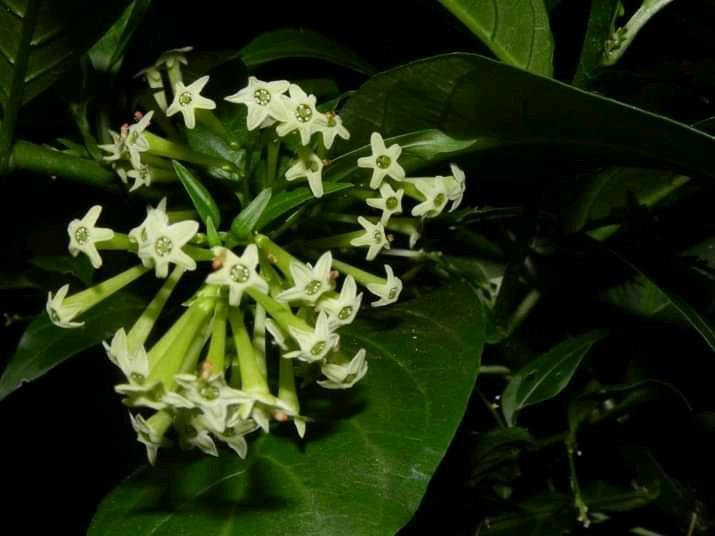
How many types of Hasna hena flower and what are they?
Hasna hena flower is the queen of fragrant flowers. This flower usually has five petals. The color of the flower is white. The flower enhances the beauty of the yard and at the same time it keeps the whole house fragrant. This flower can be seen all year round except winter season.
Hasna hena is a flower that captivates the mind during at the rainy season. It is said that, Snakes come running in the middle of the night with the sweet smell of Hasna Hena. The flowers usually start blooming in the evening and end at the early morning.
Actually, it’s fragrance lingers unabashedly all night long. That is why Hasna hena is called the queen of the night in nature. It is originally from the West Indies. However, this flower can be seen everywhere in Bangladesh(Asian country). This plant absorbs carbon dioxide and releases oxygen into our environment.
Flower Size and accurate measurements of the Hasna hena flower.
Greenish-white, a slender tubular corolla 2-2.5 cm (0.79–0.98 in) long with five acute lobes, 10–13 mm (0.39–0.51 in) in diameter when open at night and producing sesame seeds. Firstly, it spreads sweet fragrance at night.
Scientific name and Identity of Hasna hena flower.
Hasna hena flower or Hasna Hana (scientific name – Cestrum nocturnum) is a flower belonging to the Solanaceae family. It has many names in English language.
The names are: Lady of the night, Night-blooming jessamine, Night-scented jessamine, Night-scented cestrum or Poisonberry. The flower is native to the West Indies, but has adapted well to the natural environment of South Asia.
Accurate seasonal time of the Hasna hena flower.
Accurate time of this flower is from May to November. Demand for this specialty has grown significantly as a result of recent corporate scandals.
Scientific Name & Common Name of Hasna hena flower.
Kingdom.
Plantae (Plants).
Subkingdom.
Tracheobionta (Vascular plants).
Infrakingdom.
Streptophyta (land plants).
Super Division.
Spermatophyta (Seed plants).
Division.
Magnoliophyta (Flowering plants).
Sub Division.
Spermatophytina (spermatophytes, seed plants, phanérogames).
Class.
Magnoliopsida (Dicotyledons).
Sub Class.
Asteridae.
Super Order.
Asteranae.
Order.
Solanales.
Family.
Solanaceae (Potato family).
Genus.
Cestrum L. (Jessamine).
Species.
Cestrum nocturnum L. (night Jessamine).
Synonyms of Hasna hena flower.
- Cestrum foetidissimum Jacq,
- Cestrum graciliflorum Dun,
- Cestrum hirtellum Schltdl,
- Cestrum leucocarpum Dun,
- Cestrum multiflorum Roem. & Schult,
- Cestrum nocturnum var. mexicanum O.E.Schulz,
- Cestrum propinquum Mart. & Gal,
- Cestrum salicifolium Hort.Monsp,
- Cestrum salicifolium Hort.Monsp. ex Dun,
- Cestrum scandens Thib,
- Cestrum scandens Thib. ex Dun,
- Cestrum spicatum Mill,
- Cestrum suberosum Jacq,
- Cestrum yucatanense Francey and
- Chiococca nocturna Jacq.
Blooming Time and Duration of the Hasna hena flower.
Hasna Hena petals develop in the early hours of the night. That is to say, after the light of day has been removed and the darkness has descended, the flowers begin to bloom and as the night progresses, it is fully developed and spreads a soothing fragrance.
Classification of The Hasna hena flower.
It is a very simple and Eco-friendly flower. Whether it is a tree, big or small, and wherever it is, it fills the surroundings with fragrance.
Availability of Hasna hena flower the world.
It is native to the West Indies, available in South Asian countries. It is now one of the most popular flowers in Bangladesh and many people here love it, said Hasna hena. All average, you can get this flower in Asia, Africa, Europe, North America, South America, Oceania, Ontarc vaccination.
Characteristics, Shapes and Sizes of Hasna Hena flower.
According to scientific research, Hasna hena tree is one type of creeper and bush. It is an evergreen woody plant and grows up to four meters or 13 feet tall. The leaves are oblong, smooth and three to four centimeters long. Its stems and branches have many white spots which make the stems attractive along with the leaves of the tree.The flowers are cylindrical, whitish and up to 2 cm long in 5 petals. At the apex of each branch of the tree clusters a large number of flowers. The flower structure is look thin and long.
Benefits and Uses of Hasna hena flower.
This flower is used for many purposes, some of which are mentioned below:
- This flower is used for temporary application on burns, wounds and skin inflammation.
- Night jasmine also helps reduce swelling and inflammation in the joints due to arthritis.
- It is also used as a medicine to relieve the symptoms of epilepsy.
- Night jasmine also has antiviral and antibacterial health benefits and has been used for infections such as malaria.
- An extract of the plant is used as an antispasmodic and in the treatment of epilepsy.
- Dried leaf decoction was not pharmacologically effective against induced convulsions.
- Both aquatic and methanol extracts of plants show bactericidal activity against Staphylococcus aureus and various other bacteria.
- In laboratory tests, the extract of this flowering plant has been shown to inhibit tumor growth.
- Yukatek Mayara c as a treatment for night sweats. Nocturnum leaves and flowers are very beneficial.
- An extract of the leaf is used in Mexican folk medicine for headaches and nervous imbalances, as well as in epilepsy and other seizures. Used as a skin lotion in America and the Caribbean. In the case of epilepsy, chorea and hysteria in the past, a fruit extract was taken orally as a cure, the treatment was gradually reduced and ended in a short time.
- The leaves are thought to be toxic to humans, but are used in small doses to treat epilepsy in Thailand.
- The leaves of this tree are used by Chinese people as an external application for burns and swelling.
- The plant extract is used in Mexico as an antispasmodic and for treating epilepsy.
- Used to treat epilepsy in Antilles.
- The people of Malasa use its juice for cataracts in India.
- Yukatek Maya ogjt uses hot bath leaves and leaves for the treatment of sweat.
- Used to treat foot swelling and burns.
- This flower oil is used in the treatment of malaria in Africa.
- It is a popular flower of Night Blooming Jasmine for the treatment of epilepsy, hysteria, nervousness and convulsions. The flower has been introduced all over the world for its fragrance and white.
- It is used as a hedge plant and is cultivated as a medicinal plant.
- An unpleasant odor comes out when the leaves are crushed.
- This flower, which blooms at night, can be grown as a house or archive.
- Hasna Hena flowers bloom four times a year, after which they produce white berries full of seeds.
- In Kathmandu, its flowers are presented as gifts to Shiva and Ganesha.
- Nepali shamans make formal incense from leaves and fresh flowers to increase their spiritual healing power, chew fresh flowers and smoke when dried.
- Night Blooming Jasmine’s freshly crushed leaf beetles are committed against rice weevil and Trogoderma granarium.
- This flower oil is an essential oil used to repel mosquitoes.
Demand and Price of Hasna hena flowers all over the world.
Market demand of this flowers varies from time to time. Some people use this flower all year round while others use it at certain times of the year for specific reasons. This flower is used for all purposes including house decoration, wedding ceremony. Demand for this specialty has grown significantly as a result of recent corporate scandals. These flowers are priced differently depending on the season and quality. Price of the Hasna hena flower is 40 to 50 USD Dollar per kilogram.
Night Blooming Jasmine Sestrum Nocturnum Plant.
27.50 Dollar.
Ohio Grown Night Blooming Jasmine Plant.
12.49 Dollar.
Night Blooming Jasmine Fragrant Sestrum Nocturnal Plant.
12.00 Dollar.
Hasna Hena flower local Identity and what is called in different countries all over the world ?
Arabic: مسک اللَائيل (مسك الليل)
Common English: Hasna-Hana
English: Hasna Hana (Hasnahena)
Burmese: Nya-hmwe-pan, Saung-taw-ku
Chamorro: Lady of the night, lady of the night
Chinese: Ye Jiang Shu (香 树), Ye Jiang Mu
Costa Rica: Jomilo
Cuba: Evening Cheek, Fedora, Evening Jasmine
Dominican Republic: Evening Jasmine, Rufiana
El Salvador: Poisonous stick
English(all over the world): Lady-of-the-Night, Night Sestrum, Night Flowering Jasmine, Night Jasmine, Night Jasmine, Queen of the Night, Night Jasmine, Night Queen, Night-Blooming Jasmine, Night-Flowering Jasmine, Night-Flowering Jasmine, Night-Centered Sestrum, Poison Berry, Lady of the Night, Night-Blooming Jasmine, Lady of the Night, Nightingale, Night Blooming System
Fijian: cara, fat, fat and money, ai pua e pogi
French: Knight Jasmine, Nightingale
German: Knight Jasmine, Knight – Hammerstrauch
Greek: Nýchta giasemiá ()
Guam: Nightingale
Guatemala: Nightingale, Queen of the Night
Haiti: Jasmine Kaka Chat, Night Jasmine, Night Lilac
Hawaiian: Ala Aumo, Kapua, Onuna Ipana
Hindi: रात की रानी (रात कत रानी)
Indonesian: Arum Dalu
Italian: Galante de Note
Japanese: Yakokawa
Congo: Dondoko
Konkani: रातरानी (रातरानी)
Latin: Knox Anian variant
Lukimi: Sedapalam: Niśāṟāṇi (നിശാറാണി)
Mandarin: Ye Jiang Shu
Manipuri: Thabai Lei ꯂꯩ ꯂꯩ
Maori (Cook Islands): Ariki-Vine, Tierre Arki Van’in Marathi (Raseratrani)
Marathi: Jonul River Awa
Mexico: Night Scent, Herba Hedionda, Evening Scent
Myanmar: Nia-humway-pan, Sang-tao-ku
Nepali: Hasna Phul (Hasi Phul)
Nicaragua: The scent of the night
Niwan: Ike he po
Oriya: ହେଇବନନନନ Favorite Night
Philippines: Lady of the Night
Polish: Noc kwitnący jaśmin
Portuguese: Jasmim-da-noite, dama-da-noite
Spanish: Lady of the night, lady of the night, gallant of the night, Queen of the night, smell of the night रात, दुर्गंधयुक्त लाठी
Swedish: Vit Nuttajasmin
Telugu: Queen of the Night (రాణి)
Thai: night, night (ราตรี)
Tonga: Laukaupouli
Tuvaluan: Aulaona,
USNAUANA: Aumaona: Aolaona, USA
America: Jasmine blossoms at night.
Mexico, Central America (ie Belize, Costa Rica, El Salvador, Guatemala, Honduras, Nicaragua and Panama) and Cuba.
Most common name of Hasna hena flower.
Evening Scented Jasmine, Jasmine, Lady of the Night, Lady of the Night, Night Blooming Jasmine, Night Sestrum, Night Jasmine, Night Queen, Night Blooming Jasmine, Night Flowering Jasmine, Night-Flowering Jasmine, Night-Scented Jasmine. Night Blooming System, George Jasmine.
Attractive Features of Hasna hena flower.
Anyone who does not know this flower will think at first sight that the flower has not blossomed yet. The blossoming part of the flower is divided into five parts and looks like a star. The color varies from white to ghee. As the night deepens, its fragrance enchants all around. The scent of flowers can be found from far away. It can be seen blooming almost all the time except winter. However, in the rainy season, the flowers bloom more. littleinvention1
Roots of the Hasna hena plants.
This tree grows best in well drained and sandy soils, where there is plenty of room for roots to spread. The roots are spread around the soil and are strongly white.
Hasna hena flower stalks.
Younger twigs are slightly finely hairy. The stalks are more. The stalks are green in color.
Branch of Hasna hena tree.
Vertical or hanging, angular, olive or bluish-green, lenticellate, glabrous.
Seed of the Hasna hena flower.
Small to long oval to round berry, hard or juicy, 8-10 mm in diameter with 1-3-seeds. The fruit is very beautiful to look at.
Fruit of the Hasna hena flower.
Fertile flowers followed by small long ovate to round berries, hard or juicy, 8-12 mm in diameter. These berries initially turn greenish white as they mature. The calyx remains fixed with the fruit. A fruit can contain up to 10 seeds and each seed is ovate and about 4-5 mm long and 2-2.5 mm wide and black in color.
Fruit’s color and size of the Hasna hena flower.
As it matures, it initially turns greenish white. Seeds ovate, 2.5-6 mm long, black taste bitter. Culinary use. The leaves are cooked with fat with tortillas.
Hasna hena leaves.
What is the Average size of the Hasna hena leaves?
Leaves long, elliptical and lanceolate (spear-like), 6-15 cm long and 2-7 cm wide; Smooth with equal margin with petiole about 0.4-0.8 cm long. Shiny. The lateral veins are curved inside the blade margin but specific flowers are produced at the ends of the branches where they appear as dense clusters of flowers in small stems. Derived from the junction of pulses. As a result, both the flower and the leaf are frequently gathered.
The flowers are cylindrical, greenish white to cream (there is a familiar yellow variety) and the upper part of the tube is divided into five sharply pointed, triangular lobes or petals. The tubular part of the flower is 2-2.5 cm long and the diameter of the open flower at night is about 1-1.3 cm. The stamens and anthers are in the floral tube.
Although the flowers are invisible to the naked eye, their sweet scent is noticeable. The scent is obviously strong at night. The Hindi name means queen of the night, while the Manipuri name means moon flower. No perfume garden is complete without this nocturnal beauty. The scent of a wonderful flowering plant with its charming jasmine blossoms at night also causes severe allergic reactions in some people. Not creating a loop. The ribs in the middle of the bottom of the surface are finely hairy.
The benefits or good side of the Hasna hena leaves.
Hasna hena leaves have many benefits. The leaves of this tree contain many kinds of organic fertilizers. Contains many nutrients that help maintain soil fertility and maintain soil quality. Its leaves can also be used as fuel and tree herbs are used for many other purposes
The importance of Hasna hena leaf in the environment.
Oxygen is what we need most to survive. And this plant provides more oxygen to the atmosphere. As well as absorbing large amounts of carbon dioxide from the atmosphere. It maintains the balance of the environment. So, we get the oxygen we need to survive.
Prople use this leaves for fuel.
The leaves of this tree are used as fuel. It is possible to make much better fuel with the leaves of all the trees in the world. It is able to meet our daily energy needs. This, on the other hand, saves wood. Garbage is removed from the environment. Helps to balance the earth’s climate and environment.
Hasan Hena tree.
Night Blooming Jasmine is an evergreen, straight, small tree that is usually 2-4 meters tall. The tree grows in moist or moist-forested areas. These include riparian zones, secondary forests and dense lowland forests, scrubs, as well as open areas, both natural, usually cultivated in gardens, trail sides, forest gaps and landslides.
It can also be cultivated in open forests, forest edges, streams and shrubs. The tree grows best in well-drained, sandy soils, especially where there is plenty of room for its roots to spread. Young stalks with fine fine hairs. The branches are erect or bent, angular, olive or bluish-green, lenticellate and glabrous.
Size of the Hasna Hena plants.
The height of the tree with the pot is 1 foot and the size of the pot is 5 inches in diameter.
Plants nature outdoor-semi-shade, alternative day water
Grows up to 25 feet, suitable for gardening, landscaping and entrances.
On what soil does Hasna hena plant grow?
This plant can grow in almost all soils, including well drained soils. These plants cannot grow on clay or hard soils. Can grow well in well drained soil. Planting trees in the right place and growing in this soil results in higher yields and much more flowering capacity.
Hasna hena flower plant’s care and environment.
What fertilizers and pesticides are to be given on Hasna hena flower?
The main requirements for keeping the plant healthy are:
Sunlight 3-6 hours of direct sunlight and natural indirect bright light for the rest of the day.
Apply 4 cups (about 200 ml) of water if it feels dry to touch the soil (1-2 inches) on the top of the pot. The soil should be well drained and rich in fertile, organic matter.
Collecting and storing of Hasna hena flowers.
Collection: Place the plant in natural indirect bright light. Push your finger / ordinary small stick on the ground to check the moisture. Apply 4 cups (about 200 ml) of water if it feels dry to touch the top soil (1-2 inches)
Caution:
Berries are toxic to humans and animals.
Toxic symptoms include headache, dizziness, hallucinations, nausea, vomiting, bloody diarrhea, muscle spasms and nervousness, high temperature, salivation and sweating, paralysis and coma.
Some people, especially those with respiratory sensitivity or asthma, report difficulty breathing, nasal and throat irritation, headaches, nausea, or other symptoms when exposed to the strong scent of flowers.
Some plants c. Nocturnum is described as “toxic” and warns that eating plant parts, especially fruit, can cause high temperatures, rapid heartbeat, excess saliva and gastritis.
A 2-year-old child eats green berries for several weeks, causing diarrhea, vomiting and blood clots in the stool.
It can cause respiratory irritation, headache, rapid pulse, excess saliva or other symptoms.
Frequently Asked Question About Hasna Hena flower.
1. What is Hasna hena ?
Answer: Hasna hena is one kind flower, spread perfume only at the night. Strong body. Green leaves.
2. Which place is the best to cultivate Hasna hena?
Answer: Compost fertilizer mixed soil is the best to cultivate Hasna hena flower.
3. How many years need plant to grow flower?
Answer: Need only 6 month, if have compost fertilizer on soil.

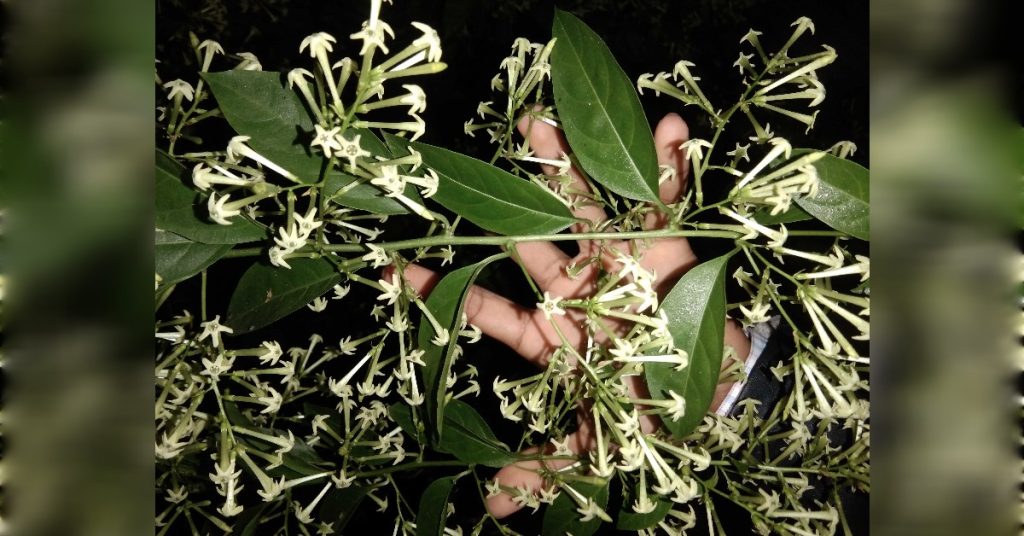

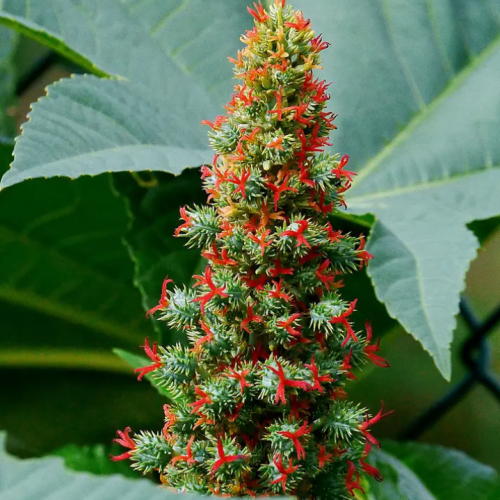



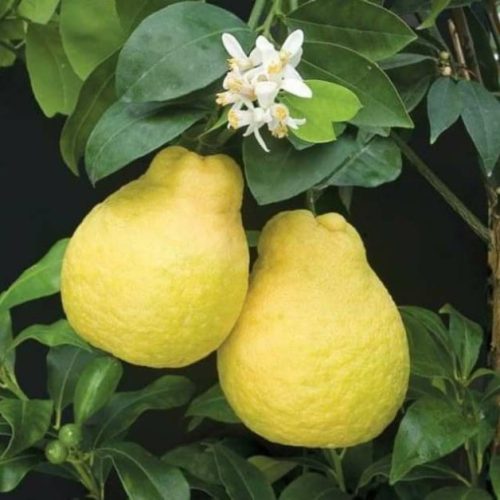
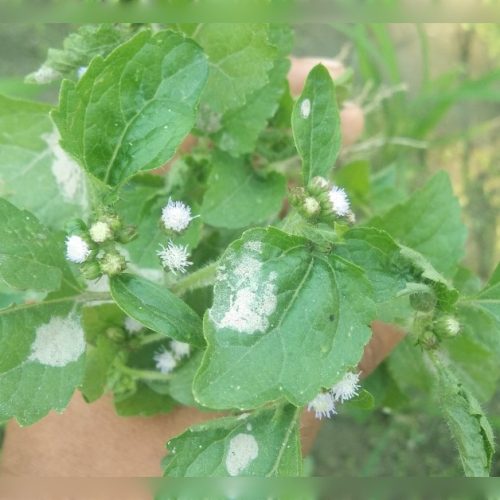
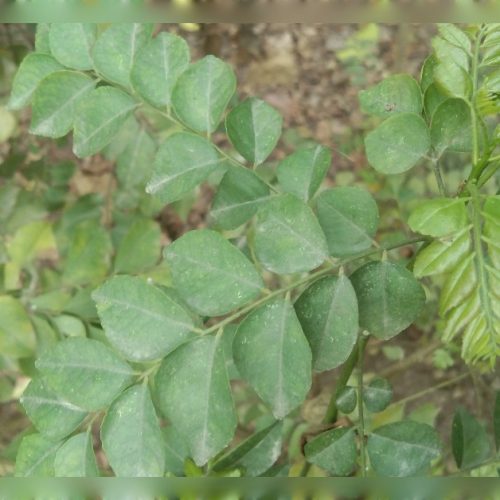


1 Comment
No spam commnt will be allowed